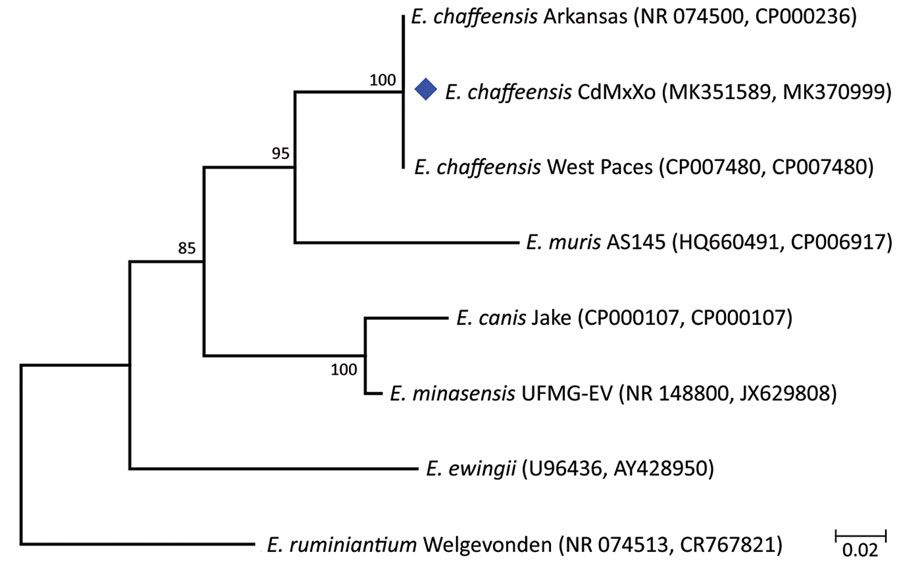Volume 26, Number 12—December 2020
Dispatch
Human Monocytic Ehrlichiosis, Mexico City, Mexico
Figure

Figure. Maximum-likelihood phylogenetic tree for Ehrlichia chaffensis from a patient with human monocytic ehrlichiosis, Mexico City, Mexico (blue diamond), and reference sequences. The tree was generated by using concatenated fragments of 16S rRNA and dsb genes in an 850-bp alignment. GenBank accession numbers are indicated in parentheses. Numbers along branches are bootstrap values. Scale bar indicates nucleotide substitutions per site.
1These authors contributed equally to this article.
Page created: September 08, 2020
Page updated: November 19, 2020
Page reviewed: November 19, 2020
The conclusions, findings, and opinions expressed by authors contributing to this journal do not necessarily reflect the official position of the U.S. Department of Health and Human Services, the Public Health Service, the Centers for Disease Control and Prevention, or the authors' affiliated institutions. Use of trade names is for identification only and does not imply endorsement by any of the groups named above.